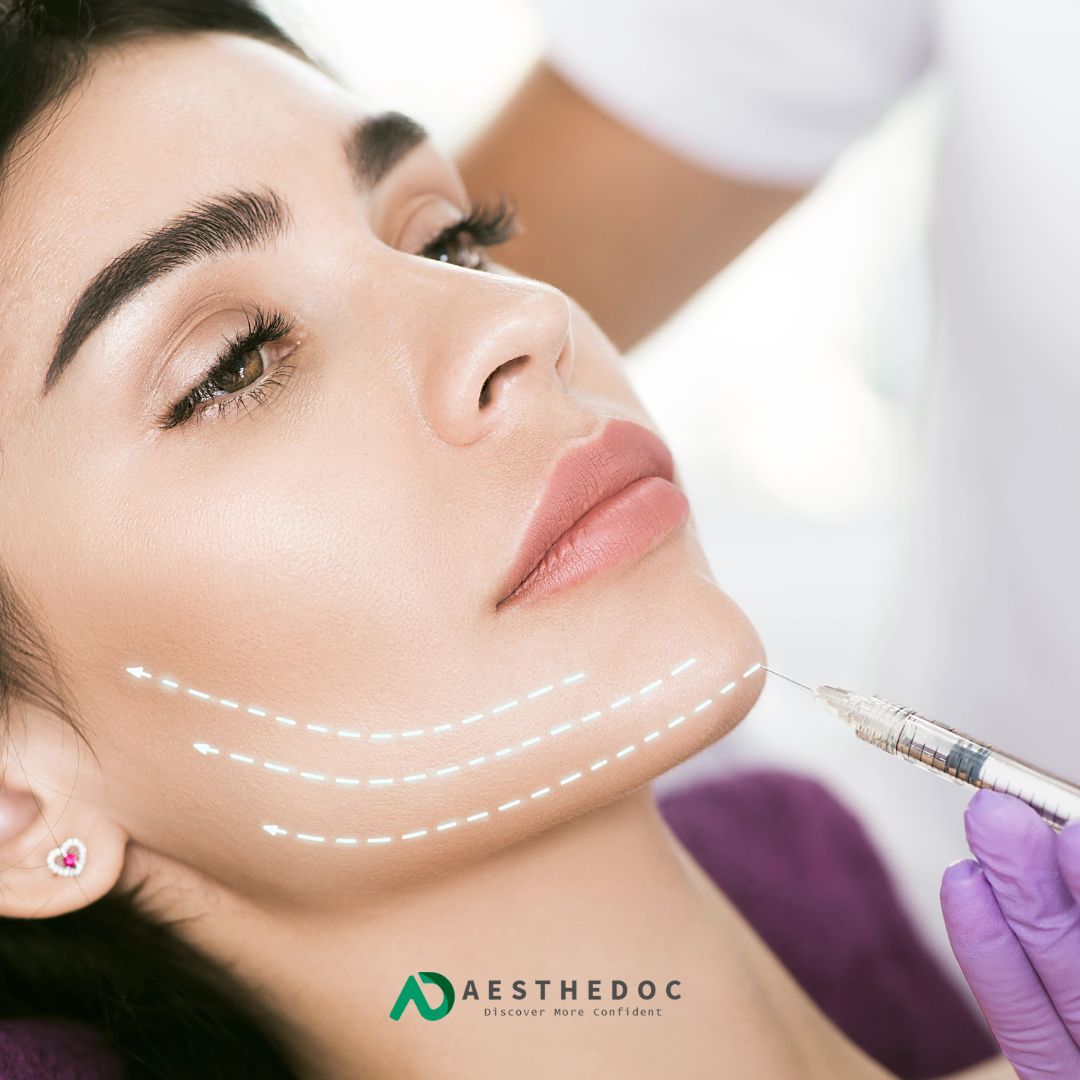Facelift surgery, also known as rhytidectomy, is a cosmetic procedure designed to address the visible signs of aging by tightening the skin, removing excess fat, and smoothing out wrinkles. Whether it’s drooping skin, deep creases, or sagging jowls, a facelift offers a solution to restore a more youthful appearance. In this comprehensive guide, we’ll explore the ins and outs of facelift surgery, including the procedure types, benefits, potential risks, recovery, and how to choose the right surgeon.
1. What is a Facelift?
A facelift is a surgical procedure aimed at improving the appearance of the face and neck by addressing sagging skin, deep folds, and fat deposits. The procedure primarily targets the lower two-thirds of the face, including the jowls, cheeks, jawline, and neck, which are common areas showing signs of aging. The goal is to create a more youthful and refreshed look by tightening underlying muscles and removing excess fat and skin.
2. Types of Facelift Procedures
Facelift surgery has evolved over the years, offering several options to suit different needs and preferences. The choice of procedure depends on the extent of aging, personal goals, and the patient’s anatomy.
- Traditional Facelift: This is the most common type, involving larger incisions along the hairline, behind the ears, and sometimes under the chin. It allows for extensive skin and muscle tightening, which addresses sagging skin and deeper wrinkles effectively. The results can be dramatic and long-lasting, but it requires a longer recovery time.
- Mini Facelift: A less invasive option that focuses on specific areas of the lower face, particularly around the jowls and jawline. The incisions are smaller and recovery is typically quicker, making it ideal for those who are experiencing early signs of aging.
- S-Lift: An S-Lift targets specific areas using shorter incisions, allowing for minimal scarring. It’s a good choice for patients looking for subtle improvements without the need for a full facelift.
- Non-Surgical Facelift: For those not ready for surgery, non-surgical options like injectable fillers, Botox, and thread lifts offer a more temporary solution. These procedures target specific areas like the cheeks and nasolabial folds and provide a refreshed look without the invasiveness of surgery.
3. The Facelift Procedure
The facelift procedure typically begins with a thorough consultation where the surgeon assesses the patient’s facial anatomy, skin condition, and discusses expectations. Here’s a closer look at what happens during a facelift surgery:
- Consultation: During the initial consultation, the surgeon will discuss the patient’s goals, examine their face, and determine the best approach for the procedure. This is an opportunity for patients to ask questions, voice concerns, and understand what to expect from the surgery.
- Anesthesia: Facelift surgeries are usually performed under general anesthesia, although local anesthesia with sedation is an option for minor procedures. Anesthesia ensures that the patient remains comfortable throughout the surgery.
- Surgical Steps:
- Making Incisions: The surgeon makes discreet incisions around the hairline, behind the ears, and sometimes under the chin. These incisions allow for access to the underlying tissue.
- Tightening Muscles and Removing Excess Fat: Once the incisions are made, the surgeon tightens the underlying muscles to provide support and contours the face. Excess fat may be removed or redistributed to enhance facial contours.
- Redraping the Skin: The skin is then gently pulled back, excess skin is trimmed, and the incisions are sutured. This redraping gives the face a smoother, more youthful appearance.
- Closing the Incisions: The incisions are carefully closed with fine sutures or staples, and a bandage may be applied to reduce swelling and support the healing process.
- Duration and Recovery: The procedure typically takes 2 to 4 hours, depending on the complexity and the technique used. Recovery time varies, but patients can usually expect some bruising, swelling, and discomfort. Most people can return to work within 10 to 14 days, though strenuous activities should be avoided for several weeks. Full results become visible after several months as swelling subsides and incisions heal.
4. Benefits of a Facelift
A facelift can have profound effects on a person’s appearance and self-esteem. Here are some of the key benefits:
- Restores a Youthful Appearance: One of the primary reasons people opt for a facelift is to achieve a more youthful appearance. It effectively reduces sagging skin, wrinkles, and fine lines, making the face look firmer and smoother.
- Boosts Confidence: By improving self-image, a facelift can significantly boost confidence. Many patients report feeling happier and more comfortable with their appearance after surgery.
- Long-Lasting Results: While no procedure can stop the aging process entirely, a facelift can provide long-lasting results, with many patients enjoying their rejuvenated look for several years.
5. Potential Risks and Complications
As with any surgery, a facelift comes with certain risks. It’s important for patients to be aware of these and take steps to minimize them:
- Overview: Potential risks include infection, excessive bleeding, scarring, and adverse reactions to anesthesia. Nerve damage, which can cause temporary numbness or weakness in the facial muscles, is also a possibility but is rare.
- Minimizing Risks: Choosing a qualified and experienced plastic surgeon is crucial to minimizing these risks. A good surgeon will explain the potential complications and take all necessary precautions.
- Post-Surgery Care: Following post-operative care instructions is key to a smooth recovery. This includes taking prescribed medications, avoiding strenuous activities, and attending follow-up appointments.
6. Recovery After a Facelift
Recovery is an important part of the facelift process. Here’s what to expect and tips to ensure a smooth recovery:
- Initial Recovery: Immediately after surgery, patients may experience swelling, bruising, and some discomfort. Ice packs can help reduce swelling, and pain medications are prescribed to manage any discomfort.
- Long-Term Healing: Swelling should subside within a few weeks, but it can take several months for all the swelling to disappear and for the final results to be visible. Incision lines will initially appear red or pink but will fade over time.
- Tips for a Smooth Recovery:
- Rest and Elevation: Resting with the head elevated can help reduce swelling. Avoid activities that require bending over or lifting heavy objects.
- Diet and Hydration: A balanced diet and plenty of fluids are important for healing. Avoid alcohol and smoking, as they can slow down the healing process.
- Sun Protection: Protecting the skin from the sun’s UV rays is essential to prevent discoloration and promote healing.
7. Financing and Costs
The cost of a facelift can vary widely based on factors such as the surgeon’s expertise, the geographic location of the surgery, and the complexity of the procedure. It’s important for patients to understand all associated costs and financing options:
- Cost Factors: Include the surgeon’s fees, anesthesia fees, facility fees, post-operative care, and medications.
- Payment Options: Many patients opt for financing options like credit cards, loans, or health savings accounts. Some clinics also offer payment plans to make the surgery more accessible.
8. Choosing the Right Surgeon
Selecting a qualified and experienced plastic surgeon is crucial for achieving the best results. Here’s what to consider:
- Qualifications: Look for a board-certified plastic surgeon who specializes in facelifts. Check their portfolio of before-and-after photos to see their work.
- Questions to Ask: Ask about their experience with facelifts, success rates, potential complications, and their approach to post-surgery care.
- Patient Reviews: Reading patient reviews and testimonials can provide insight into the surgeon’s bedside manner, professionalism, and the overall patient experience.
9. Alternatives to Facelift Surgery
For those not ready for a traditional facelift, there are several non-surgical options to consider:
- Non-Surgical Options: Injectable fillers, Botox, thread lifts, and laser treatments can provide temporary lifting effects without the need for surgery. These treatments are ideal for individuals with mild to moderate signs of aging who want to avoid the risks and recovery associated with surgery.
- Combining Treatments: Combining non-surgical treatments with a facelift can enhance results, addressing different aspects of aging for a comprehensive approach.
10. Conclusion
A facelift can be a life-changing procedure, offering a way to turn back the clock and achieve a more youthful, refreshed appearance. While it’s not a decision to be taken lightly, understanding the procedure, benefits, risks, and recovery process can help individuals make an informed choice. Whether opting for a traditional facelift, a mini facelift, or non-surgical alternatives, the key is to choose a qualified surgeon who can deliver the desired results safely and effectively. With the right approach, a facelift can be the answer to regaining confidence and feeling comfortable in one’s own skin.












